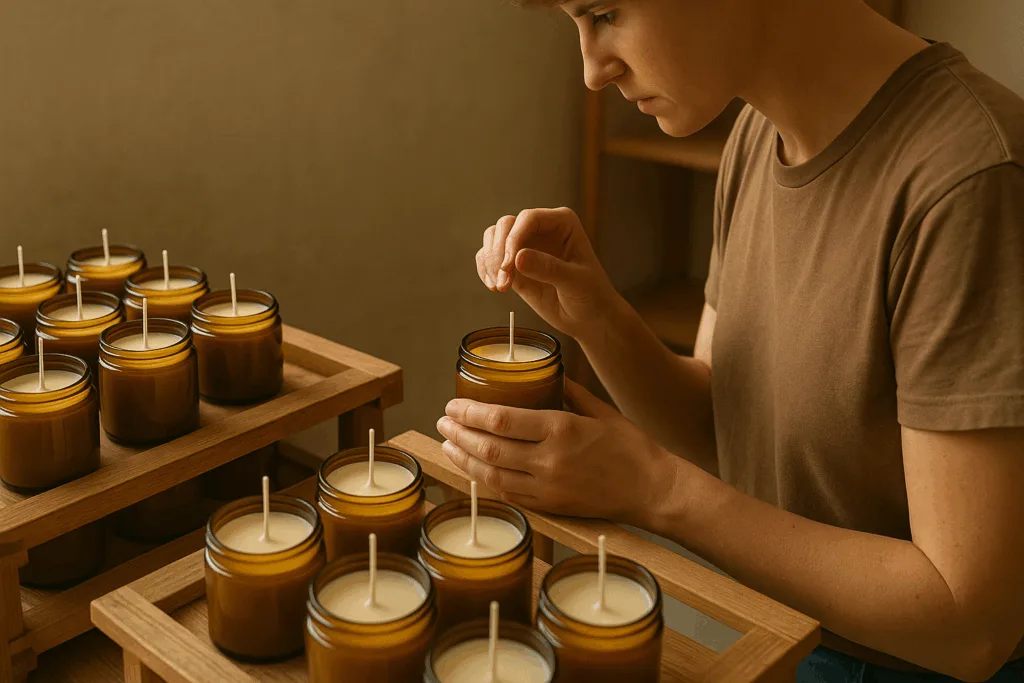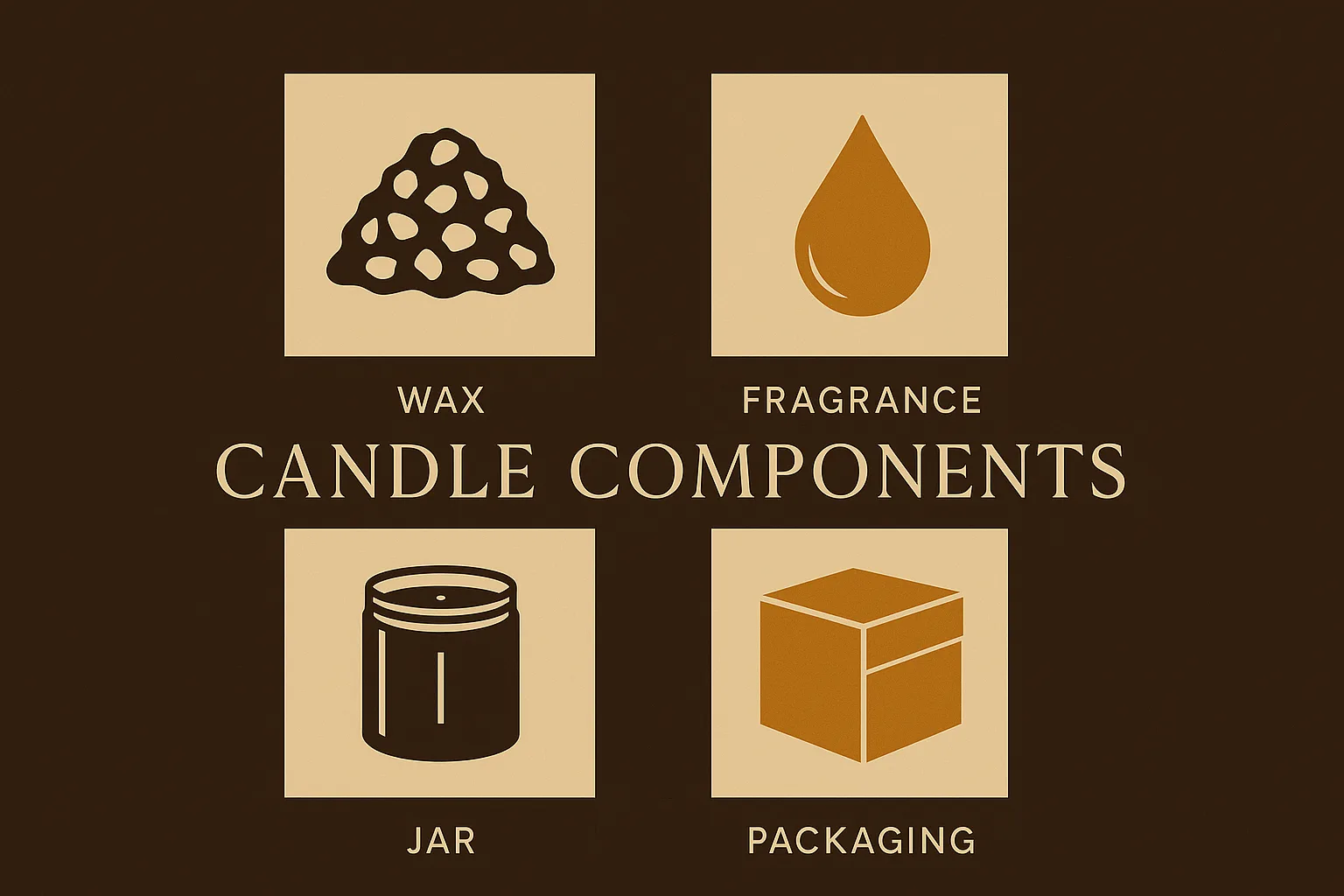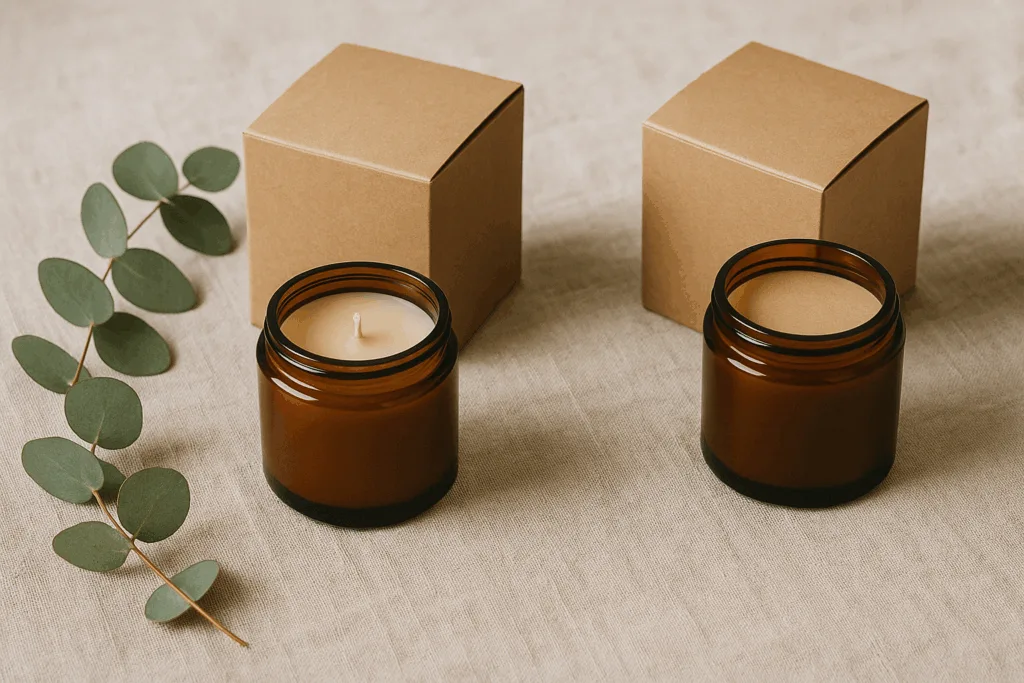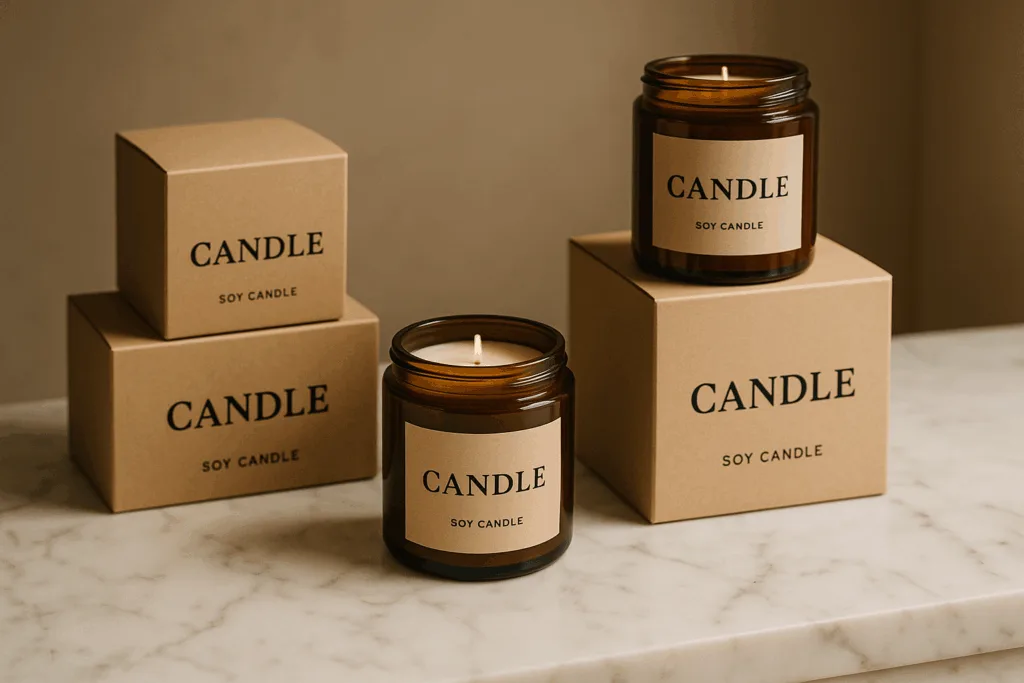Understanding MOQ, Lead Time, and Pricing in Custom Candle Production
Every great candle begins with a spark — not only of flame but of vision. For businesses entering the world of private-label or custom candle production, three foundational terms define the manufacturing journey: MOQ (Minimum Order Quantity), lead time, and pricing.
These elements shape your brand’s first impression, affect profitability, and determine how smoothly your products transition from concept to shelf. At Circe Home, where craftsmanship meets sustainability, understanding these factors isn’t just a business necessity — it’s part of a holistic approach to mindful, sensory-driven production.
Why These Factors Define the Success of Your Private Label Candle Line
In the world of premium home fragrance, timing, volume, and investment precision matter as much as scent design and packaging. MOQ affects your flexibility; lead time defines your launch rhythm; pricing determines long-term brand scalability.
Circe Home bridges artistry with operational excellence — ensuring that your candles not only smell divine but also arrive on time, within budget, and aligned with your brand story.
Candle Market Insight
Global Trends Driving the Demand for Custom Candles
The global candle market exceeds $13 billion and continues to grow as consumers seek mindfulness, natural ingredients, and scent personalization. The rise of wellness rituals, aromatherapy, and eco-conscious design fuels private-label growth.
Custom candles are no longer niche; they’re strategic brand extensions. Spas, hotels, interior designers, and gift retailers increasingly launch signature scents to embody their identity and enhance client experience.
The Rise of Artisanal and Private-Label Candle Brands
Consumers crave authenticity and narrative. Private-label candles bridge the gap between luxury and intimacy. They allow businesses to create sensory stories, crafted through fragrance, form, and feeling.
At Circe Home, every collaboration begins with storytelling — translating your brand’s mood into wax and wick. Our flexible MOQ, diverse vessel catalog, and global supply network make custom production attainable for both startups and established brands.
MOQ (Minimum Order Quantity)
What MOQ Means for Custom Candle Buyers
MOQ represents the smallest number of units a manufacturer produces per order. It ensures production efficiency, quality control, and cost balance. MOQ varies by material, vessel type, and level of customization.
For buyers, understanding MOQ helps align investment with launch strategy. A small MOQ might suit boutique brands testing the market, while large-scale runs optimize cost per unit for wholesale distribution.
Typical MOQ Requirements in Candle Manufacturing
| Candle Type | Typical MOQ | Notes |
|---|---|---|
| Soy Wax Jar Candle | 250–500 units | Ideal for startups; lower setup costs |
| Coconut Wax Blend | 500–1000 units | Premium, slower-curing blend |
| Beeswax Candle | 300–600 units | Niche product; high material cost |
| Private Label White Label | 100 units | Pre-set vessels, shared fragrance runs |
Circe Home’s MOQ options start from 250 units, depending on vessel and fragrance complexity. Our boutique-friendly model ensures accessibility without compromising luxury.
How MOQ Impacts Unit Cost and Production Feasibility
MOQ directly affects per-unit pricing. The larger the order, the lower the unit cost. This efficiency stems from optimized wax pouring, fragrance blending, and labeling processes.
For example, producing 1000 candles in one fragrance allows wax blending at scale, reducing labor time and fragrance waste. Conversely, smaller batches increase setup time and material loss, slightly elevating unit cost.
Circe Home helps brands find their ideal MOQ sweet spot — balancing budget, inventory flow, and scalability.
Strategies to Negotiate Lower MOQ for Startups
- Select Standardized Vessels: Using in-stock jars avoids mold setup fees.
- Choose Shared Batch Fragrance Runs: Piggyback on popular scent productions.
- Opt for White Label Options: Circe Home offers pre-set candle lines ready for custom labeling.
- Plan Seasonal Rotations: Launch small curated collections quarterly instead of one large run.
These strategies empower emerging brands to access premium production without overcommitting capital.
MOQ Differences Between Soy, Coconut, and Beeswax Candles
Each wax behaves differently in production. Soy wax is versatile and allows smaller runs. Coconut blends offer superior scent throw but require batch precision. Beeswax, while natural and luxurious, demands strict purity control and often higher MOQ due to supply chain constraints.
Circe Home sources globally certified waxes and adjusts batch sizes for each formula to maintain consistency and ecological integrity.
Circe Home’s Flexible MOQ for Boutique Brands
From 250 soy candles to 10,000 bespoke designs, Circe Home’s scalable system supports every stage of growth. Boutique partners appreciate our ability to grow alongside their brand — ensuring scent continuity, consistent finish, and unmatched quality.
Lead Time in Candle Production
What Lead Time Really Means in Candle Manufacturing
Lead time is the duration between order confirmation and delivery. It reflects production complexity, curing requirements, and supply chain scheduling. For custom candles, it typically ranges between 4–8 weeks.
Understanding lead time helps brands plan product launches, marketing timelines, and inventory cycles. Circe Home’s transparent scheduling and milestone tracking keep every project on course.
Factors That Affect Lead Time: Wax, Wick, Vessel, and Fragrance
Several factors shape production timelines:
- Wax Type: Natural waxes cure slower than paraffin. Soy and coconut blends require up to 10 days curing for optimal scent throw.
- Wick Choice: Testing wick compatibility per vessel ensures burn quality.
- Vessel Material: Custom glass or ceramic jars often extend lead times due to supplier coordination.
- Fragrance Complexity: Multi-note or essential oil blends take longer to stabilize.
Circe Home balances artisanal care with production efficiency using batch scheduling and in-house QC to streamline operations.
Average Lead Times for Custom Candle Orders
| Order Type | Average Lead Time |
| White Label (Stock Vessel + Fragrance) | 2–3 weeks |
| Semi-Custom (Choose Fragrance & Label) | 4–6 weeks |
| Fully Custom (Vessel, Wax, Fragrance, Packaging) | 6–8 weeks |
Circe Home’s agile system adapts to order scale and seasonality, ensuring reliable delivery windows.
How Seasonality and Supply Chain Affect Delivery Schedules
Candle demand peaks during holiday and gifting seasons (October–December). During these months, material suppliers and logistics networks face higher volume, extending lead times.
We encourage buyers to finalize orders at least 12 weeks ahead of key retail dates. Circe Home offers flexible scheduling for early production and warehouse holding to support smooth seasonal rollouts.
Circe Home’s Streamlined Production Timeline
From concept to delivery, our typical project flow includes:
- Consultation & Design Approval: 3–5 days
- Sample Production & Testing: 7–10 days
- Batch Manufacturing: 15–20 days
- Curing & Quality Control: 7–14 days
- Packaging & Logistics: 3–5 days
Our modern production facility integrates temperature-controlled curing and real-time QC tracking, ensuring consistency from the first pour to the final shipment.
Pricing Structures Explained
Key Components That Determine Custom Candle Pricing
Custom candle pricing depends on five main cost drivers:
- Wax Type — Natural blends (soy, coconut, beeswax) vary by market price.
- Fragrance Load — High-end fragrance oils increase cost but elevate scent profile.
- Vessel Material — Glass, ceramic, or metal affects both cost and luxury perception.
- Packaging Design — Custom boxes, embossing, or foil stamping add artisanal value.
- Order Quantity — Larger MOQs reduce per-unit cost through production efficiency.
Circe Home’s transparent pricing system ensures full cost visibility. We provide tiered quotes so clients can compare per-unit pricing across volumes and finishes.
Comparing Cost Per Unit vs. Wholesale Margin
While smaller runs cost more per candle, they allow agile branding and faster market feedback. Larger batches, meanwhile, favor retail distribution margins.
| MOQ | Approx. Unit Cost | Typical Retail Margin |
| 250 units | $8–9 | 40% |
| 1000 units | $6–7 | 55% |
| 5000+ units | $5 or below | 60%+ |
Circe Home helps brands choose scalable batch plans that match their retail and wholesale strategies.
Packaging, Labeling, and Branding Costs
Packaging transforms a product into an experience. At Circe Home, brands can choose between:
- Minimalist eco-packaging (kraft paper, glass lids)
- Luxury rigid boxes (foil stamp, magnetic closure)
- Private-label sleeves and label printing services
Custom design integration adds only marginal cost increases while elevating brand presence and perceived value.
How Fragrance Load and Vessel Choice Influence Price
Fragrance concentration dramatically impacts both scent performance and cost. Higher fragrance loads (10–12%) deliver stronger aroma but increase oil consumption. Similarly, premium vessels like hand-glazed ceramics enhance brand luxury but extend lead times and cost.
Circe Home consults clients to optimize between performance, sustainability, and pricing goals.
Circe Home’s Transparent Pricing Model
Every quotation includes:
- Material cost breakdown (wax, wick, fragrance, vessel)
- Labor and QC allocation
- Packaging and labeling expenses
- Freight and duty estimates for international buyers
Transparency builds trust. Circe Home’s approach ensures long-term, sustainable partnerships grounded in clarity.
Private Label Customization
How MOQ, Lead Time, and Pricing Interact with Custom Design Options
Customization depth directly affects MOQ and lead time. For instance, a fully custom vessel mold may require a higher MOQ (1000+ units) and extended production time. Meanwhile, semi-custom projects using standard jars and unique scents remain flexible.
Balancing these elements ensures efficient production without sacrificing creative expression. Circe Home’s design consultants assist in vessel selection, color coordination, and brand integration.
Choosing the Right Packaging to Balance Cost and Aesthetics
Luxury doesn’t need to mean excess. Sustainable materials, soft-touch finishes, and minimalist labeling can convey sophistication while maintaining eco-credentials.
Circe Home’s packaging philosophy emphasizes tactile texture, scented unboxing, and earth-friendly design.
Circe Home’s White Label vs. Fully Custom Solutions
| Model | MOQ | Lead Time | Best For |
| White Label | 100 units | 2–3 weeks | Fast launches, gifting campaigns |
| Semi-Custom | 300 units | 4–6 weeks | Emerging brands |
| Fully Custom | 1000+ units | 6–8 weeks | Established luxury lines |
Sustainability & Ethical Sourcing
The Cost of Sustainability: Eco-Wax, Vegan Ingredients, and Recyclable Jars
Sustainability isn’t a trend; it’s a brand promise. Eco-certified waxes, vegan fragrance oils, and recyclable packaging introduce slightly higher costs but yield immense brand equity.
Circe Home uses renewable soy and coconut wax blends, phthalate-free fragrances, and recyclable glass and aluminum vessels — aligning beauty with responsibility.
Circe Home’s Green Manufacturing Commitment
Our production follows eco-conscious protocols:
- 100% renewable energy in our facilities
- Recyclable packing materials
- Carbon-offset logistics partnerships
- Closed-loop fragrance testing systems
Each Circe Home candle represents harmony between nature, craft, and commerce.
Case Studies
Boutique Brand Collaboration: Scaling from 500 to 10,000 Units
A luxury concept store began with a 500-unit run of soy candles. After retail success, Circe Home scaled production to 10,000 units, introducing new vessels and packaging within 12 weeks. The partnership achieved 40% sales growth and consistent scent replication.
Corporate Gifting Case: Premium Custom Candles Delivered in Record Time
A global hospitality client needed 2,000 custom-branded coconut candles for a holiday campaign with a 4-week deadline. Circe Home delivered ahead of schedule using white-label vessels and bespoke fragrance blends, maintaining premium quality and client satisfaction.
Buyer’s Guide & Best Practices
How to Plan Your First Custom Candle Order Efficiently
- Define Your Brand Identity — Choose fragrance moods aligned with your story.
- Set Budget & MOQ Goals — Balance between inventory safety and capital control.
- Account for Lead Time — Plan launches 10–12 weeks ahead of key seasons.
- Prioritize Sustainability — Source natural waxes and recyclable vessels.
- Collaborate Closely — Circe Home’s design team ensures seamless translation from concept to candle.
Common Mistakes Buyers Make with MOQ and Lead Time
- Underestimating curing and testing periods
- Ignoring freight timelines
- Changing design specs mid-production
- Not ordering sufficient safety stock
Proactive planning prevents costly delays and maintains brand reliability.
How Circe Home Supports Small Businesses and Growing Brands
Circe Home’s tiered production model ensures accessibility for brands of all sizes. From boutique first runs to global retail orders, our experts provide sourcing transparency, sensory design, and sustainability alignment.
Conclusion
Ordering custom candles involves more than selecting a scent. Understanding MOQ, lead time, and pricing empowers brands to make informed, profitable, and ethical decisions. Circe Home stands as a trusted partner for brands that value craftsmanship, transparency, and sustainability.
Illuminate your next collection with confidence. Partner with Circe Home to bring your story to light.
FAQ Section
What does MOQ mean in custom candle manufacturing?
MOQ (Minimum Order Quantity) is the smallest number of candles a manufacturer will produce per scent or vessel. It ensures efficient material use and consistent quality.
What is the typical lead time for custom candle production?
Lead time varies from 2–8 weeks depending on order complexity, curing time, and seasonality. Circe Home offers transparent timelines and milestone tracking.
How can small businesses manage high MOQ requirements?
By choosing standard vessels or white-label options, startups can reduce MOQ and launch affordably. Circe Home specializes in small-batch solutions for boutique brands.
How do MOQ and lead time affect candle pricing?
Higher MOQs lower per-unit costs, while longer lead times often correlate with complex customization or sourcing needs.
Does Circe Home offer sustainable candle options?
Absolutely. We produce candles using eco-certified waxes, phthalate-free oils, and recyclable packaging.
Can I create a fully custom fragrance with Circe Home?
Yes. Our perfumers collaborate with you to develop signature scents aligned with your brand’s identity and aesthetic.






